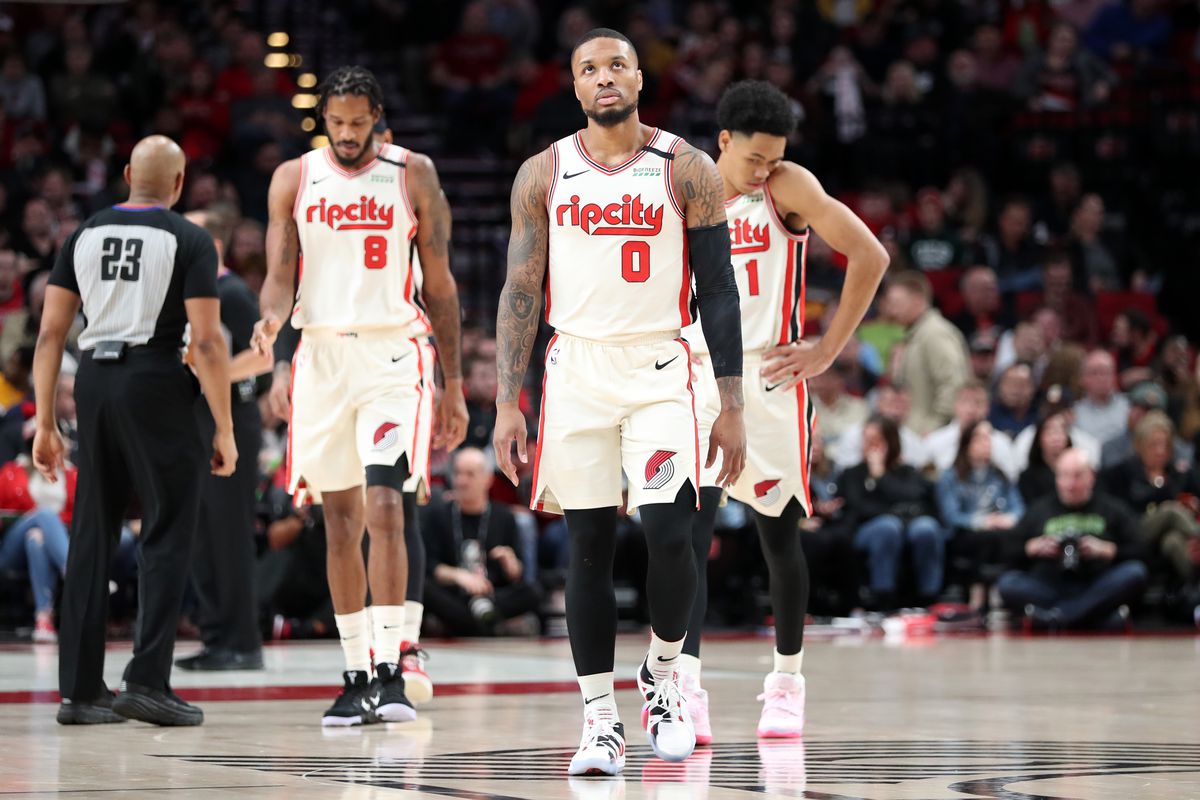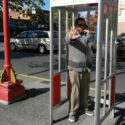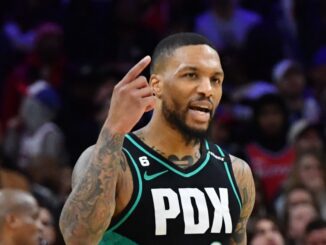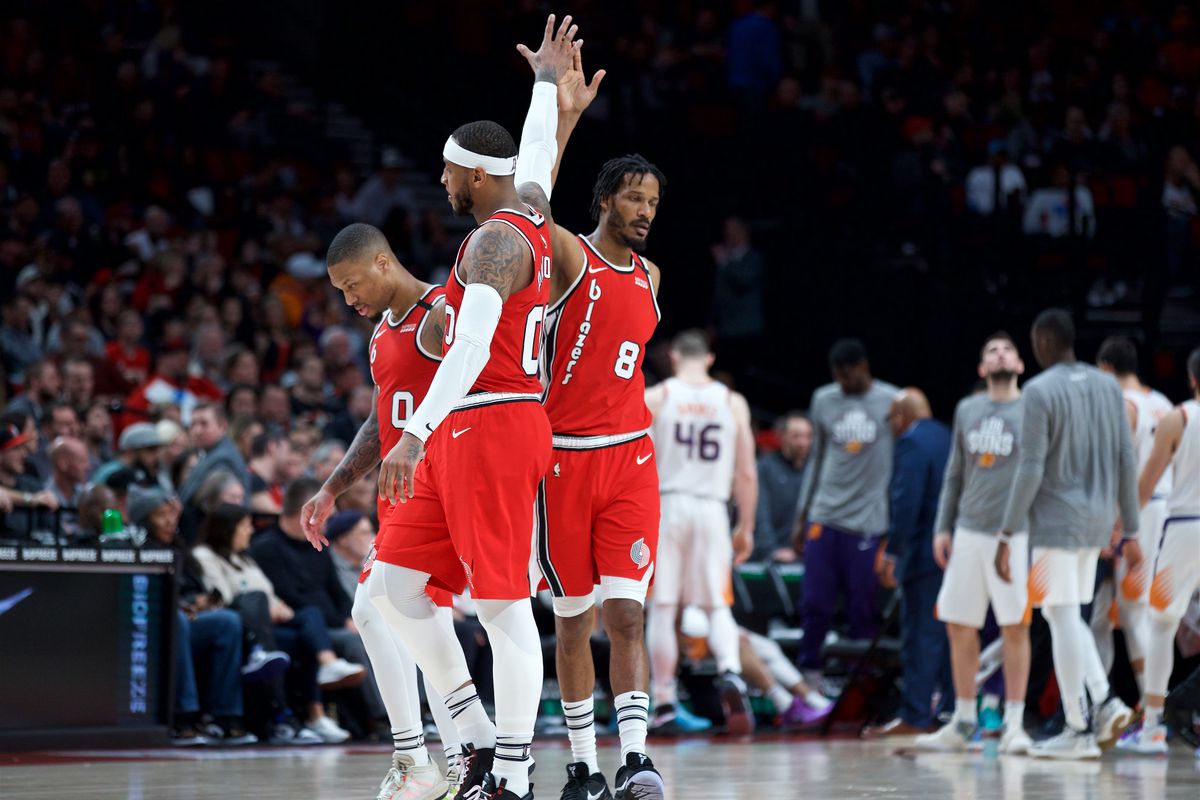
It’s been 27 years and counting since the Portland Trail Blazers last appeared in the NBA Finals, and it doesn’t look like year 28 will be any closer. Last season they made their long-awaited return to the Western Conference Finals for the first time in 19 years, but they are currently experiencing their worst start since the strike-shortened season of 2011-12. At their current pace, they will finish at 34-48 and would most likely miss the playoffs for the first time since 2013.
Focusing on the 2011-12 season for a moment, at the time, it was their worst season in 5 years and was the first time they had missed the playoffs since 2008. They finished 28-38 and didn’t look anything like the team that had appeared in the postseason for three consecutive years. Prior to the season starting, popular players Andre Miller and Rudy Fernandez were traded for fan un-favorite Raymond Felton, and if those moves weren’t tough enough, the Rose City faithful had to deal with the unfortunate news that Brandon Roy was announcing his retirement due to deteriorating health in his knees. This news arrived a mere four months after his heroics in game four of the playoff series with Dallas that had many fans believing his best was yet to come. But the team and fan base had to move on and were forced to do so in unfortunate fashion.
Just like this season, you couldn’t simply point at the lineup and determine the problem; it’s more a combination of bad luck and even worse timing. Back in 2011, the Trail Blazers starters were Raymond Felton, Wesley Matthews, Gerald Wallace, LaMarcus Aldridge, and Marcus Camby—a more than capable group. Their bench was Nolan Smith, Jamal Crawford, Nic Batum, Luke Babbitt, and 39-year-old veteran center Kurt Thomas forming the second unit.
Talent aside, they lacked on- and off-court leadership, and with the team struggling, acting general manager Chad Buchanan took action at the trade deadline, hitting the reset button by dealing Wallace and Camby for younger players and picks. This effectively ended the Roy era as Matthews and Aldridge would be the only carryover starters for a new-look lineup that was somehow even less effective.
The Wallace trade was especially important, as the draft pick the team received in return was used by newly hired GM Neil Olshey to select Damian Lillard later that year. Olshey used the team’s other first-round pick to select Meyers Leonard, who became Hassan Whiteside via trade. So there are more than just parallels to 2012, two of the five starters on this year’s team are directly connected to the Blazers’ 2012 draft.
Other than a struggling team short on depth, the two years are vastly different, but the message remains the same – almost no one is safe in a down year. On February 6th, you can bet whatever you’d like that any player not named Damian Lillard will be on the block and “available” for the right price.
Speaking of Lillard, how many of his prime years is the team going to waste with a roster that simply doesn’t match up with the best teams in the league? Lillard dropped 61 points on the Golden State Warriors earlier this week, and the team needed every last one of those points and overtime just to get a win at home over a team that is an unrecognizable shell of their former glory.
For the record, no other Blazers player eclipsed 20 points on a night Lillard shelled out 60-plus. And for those of you about to mention his running mate CJ McCollum was not there to assist, let me point to the fact that this same team played Golden State just over a month ago and narrowly came away with a victory thanks to Lillard and McCollum combining for – you guessed it – 61 points. On that same night, no other Blazers player eclipsed 20 points. If they need 61 points out of Lillard and/or McCollum to get a tight victory each time they play the worst team in the league, what does that say about this team on the whole?
The Warriors are having a very tough year, but they’re going to get a top-10 pick in the draft, maybe using it to go after an established star via trade or free agency, and then get Steph Curry and Klay Thompson back healthy next season along with an already healthy Draymond Green. This means there will be three super teams in the Western Conference and the Blazers won’t be one of them, and that’s not even counting really good teams like Utah, Dallas, Denver, or Houston.
But it’s not just poor team performances against listless opponents or getting humbled by contenders; this team continues to display deficiencies on defense against any team even when they are at their best, and a role player being added each July and then swapped in February for a borderline starter is not the answer.
Rodney Hood is out for the season, McCollum is on the shelf with a sprained ankle, Zach Collins is working his way back from shoulder surgery, and Jusuf Nurkic is recovering from a compound fracture that has sidelined him since late March of 2019. Even if I gave you your choice of three of those players fully healthy, is this team on the same level of the team from last season?
In my opinion, that’s an easy “no” and that’s a problem for everyone from the fans to the players to the coaches to ownership. Lillard has to hit the reset button every summer and start figuring out ways to gel with his new-look team. That’s not a recipe for success.
This team needs an influx of talent, and perhaps more importantly, they need an injection of continuity. The teams at the top stay at the top because they retain the same core players, something Portland has seemingly struggled with every year.
You might point to Portland being over the cap, and you’re right. You can also point to Olshey not having a lot of assets to make “big splash” moves with, and you’re also right. But I’ll ask you this – who’s fault is it if not the GM’s? Olshey is tasked with assembling a competitive roster that also makes sense on a balance sheet. We hear a lot of “they won’t come to Portland.” Well, this isn’t the only small market, so enough with the excuses. If you can’t buy them, draft better so you don’t have to buy your players! We’re in year six/seven of Olshey’s movement, people. Other teams around the league in smaller markets manage to build a contender if only so often, so why not Portland? If this was ever a rebuild, we’re way past a three- or five-year plan and it cannot be sold as a work in progress. The body of work is right in front of us, and you either support it as is and accept that Portland peaked a year ago, or you want to get away from the excuses and see the team improve and get past the last hurdle that stands between them and championship glory.
In an attempt to add much-needed depth in the short term, Olshey traded Kent Bazemore (whom he acquired during the offseason Evan Turner trade—again a role player for a borderline starter) and veteran forward Anthony Tolliver (every team needs “x” amount of warm bodies) to Sacramento in exchange for Trevor Ariza (borderline starter), Wenyen Gabriel (project/depth), and former Blazer Caleb Swanigan (project/depth).
Wenyen and Swanigan were most recently playing in the G-league, so their ability to contribute at the NBA level remains to be seen. Ariza is still a solid player but nowhere near the formidable 3-and-D wing player he was known as in his prime years.
Olshey made a similar move this time last year for a player most didn’t consider impactful at the time, trading for Rodney Hood (borderline starter), who became a crucial piece during the Blazers playoff run. Perhaps Ariza can have a similar impact this season? Maybe, maybe not. It feels like more of a cap dump move, but we’ll see if it creates an on-court improvement as well.
A very serious question at the moment is if Nurkic and Whiteside can co-exist on the court at the same time, assuming they’re both here by the time Nurk gets back? And does Portland think they can win with both, knowing they would go well beyond the luxury tax yet again if they opt to keep and pay Whiteside, assuming, of course, he agrees to stay? If they can get Collins and Nurkic back, I’d still wonder if a game-day lineup of Lillard, Anfernee Simons, McCollum, Carmelo Anthony, Ariza, Collins, Nurkic, and Whiteside is a group I’d confidently pit against the best in the west since I only see about four quality defenders in that list, and I’ll let you be the judge of which four they are.
Even if this team claws their way into the playoffs, they are fighting for a chance at the 7 or 8 seed just in time to play the Lakers or Clippers in the first round. To be honest, it’s a game of “would you rather” that ends up with everyone wishing they had spent their time throwing up instead of playing.
I believe there is a lot of diverse talent on this team and I think they should continue to give their best effort each and every game. But being brutally honest, I’m not sure they can stay above .500 with the nightly competition they are facing, or if they would benefit from it anyway as the gap between their roster and those of the elite contenders is still a bit too far.
While a higher draft pick benefits this team even in a shallow draft more than a lower one does, I’m not asking them to tank for a pick either. This could end up being the dark horse team “no one wants to face” come playoff time, but I think it’s more realistic they close out the season on a high note with a few key players returning, and finish with something like 41 or 42 wins and head into next season healthy and with something to prove.
But a team that is healthy and feels they have something to prove is only dangerous if they are ready to win now, and not a couple of pieces away. And this team is at least a couple of pieces away.
Perhaps it’s time for another Gerald Wallace trade to get the team back on the trail to a second championship.




